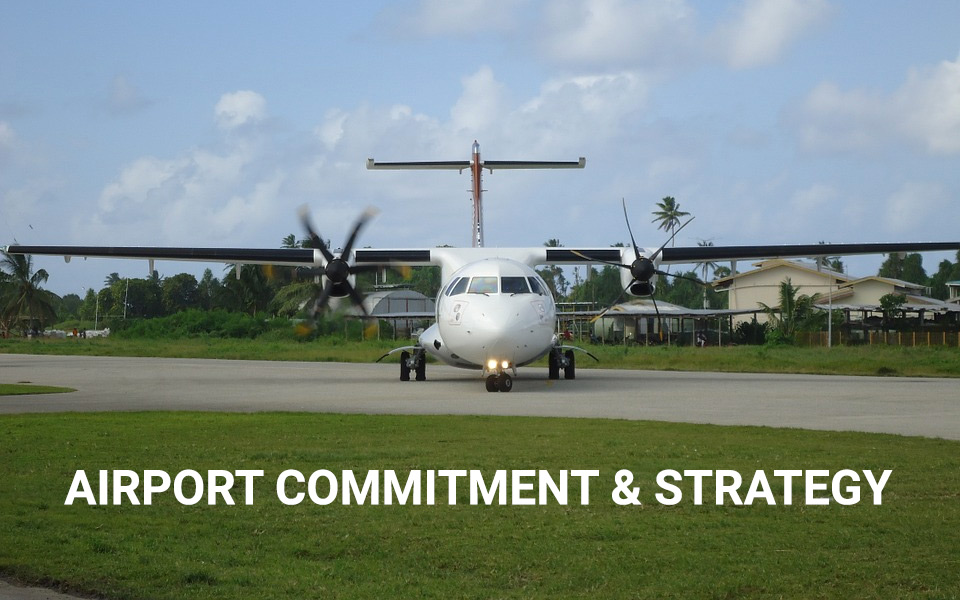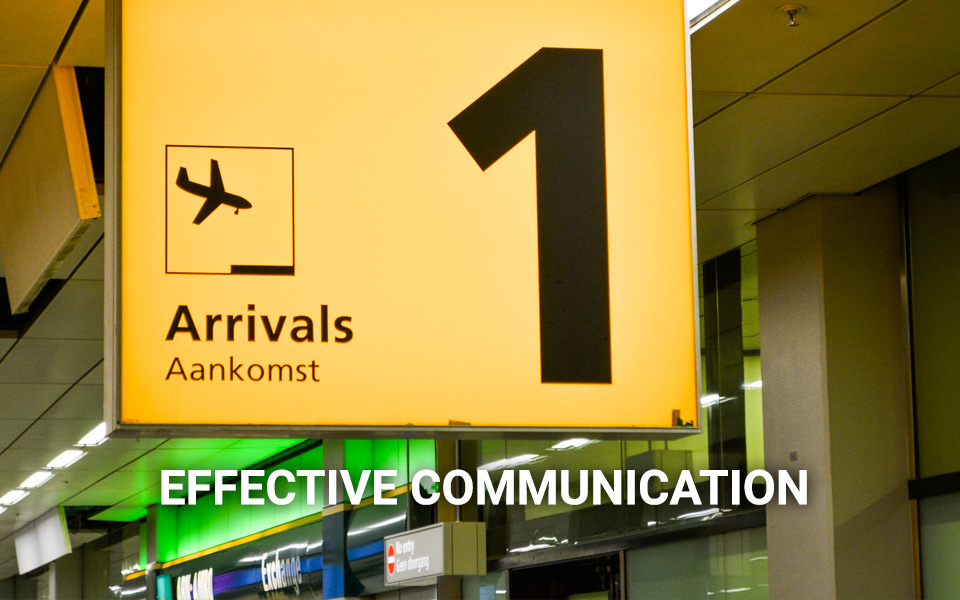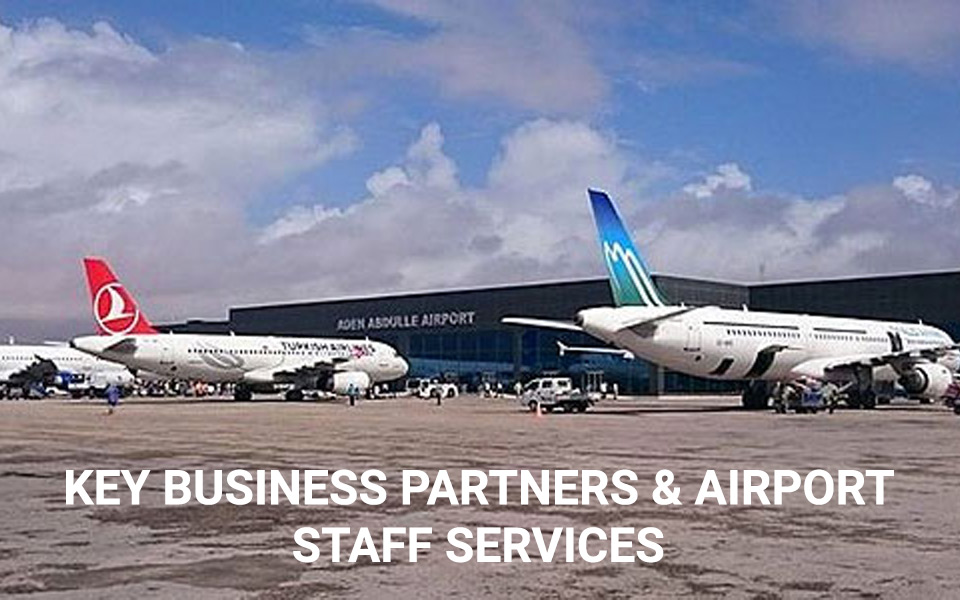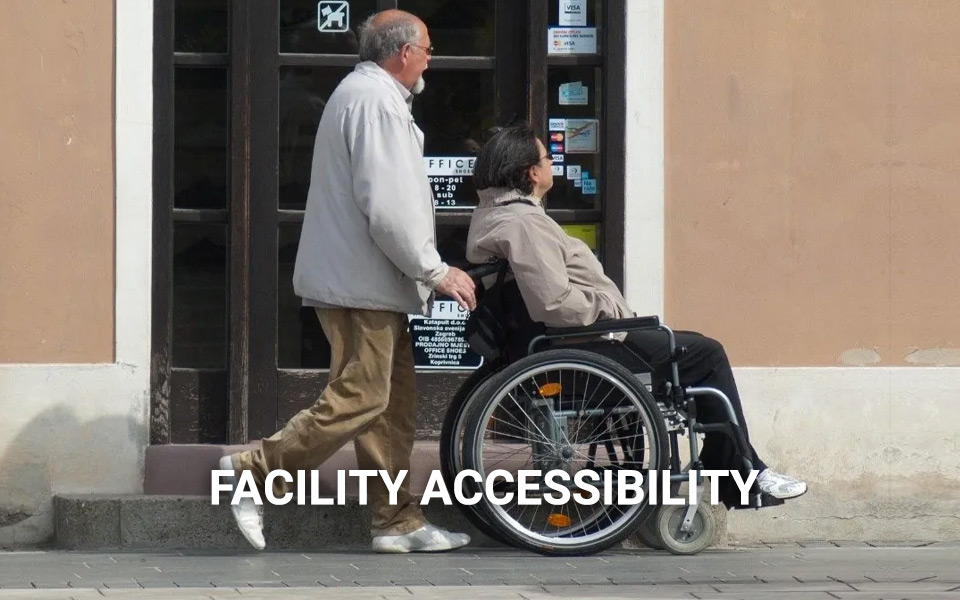A Companion WebResource to ACRP Research Report 239:
Assessing Airport Programs for Travelers with Disabilities and Older Adults
Airport Commitment and Strategy
Enhancing the experience of travelers with disabilities and older adults begins with an executive commitment and a defined strategy. Airports that verbalize and implement a strategic, holistic and seamless approach to customer experience management airport-wide enjoy higher customer satisfaction across all customer demographics, including travelers with disabilities and older adults.
1. Strategic Elements
1.1 Commitment to airport-wide accessibility and collaborative decision-making
- Review the current Airport Strategic Plan and/or Airport Customer Experience Plan to ensure it demonstrates the airport’s commitment to airport-wide accessibility throughout the organization.
- Commit to making accessibility an essential component of the airport’s customer experience brand and service delivery strategy rather than attempting to address each gap individually.
- Develop and implement a unified accessibility action plan for the airport, working in collaboration with the airport community (if there is no current unified airport-wide accessibility plan) and affected traveler segments (travelers with disabilities and older adult populations).
- Develop a long-term strategic plan for including accessibility in the fabric of providing services throughout the airport, regardless of who the service provider is.
- Launch executive management-sponsored, airport-wide accessibility initiatives, complete with accessibility service standards aligned with the airport’s customer experience/customer service (CX/CS) brand and service delivery strategy.
- Establish performance management benchmarks and implement appropriate assessment tools to determine the effectiveness of the airport initiatives to achieve improved levels of accessibility throughout the airport.
- Design and implement communications strategies to deliver the message throughout the organization and reinforce individual and department/division achievements to improve accessibility.
- Engage senior executives in accessibility awareness and promote information sharing by all airport stakeholders.
1.2 Aligned reporting structure and coordination of customer experience and accessibility activities
- Review the organizational chart to determine the reporting structure/placement of the Americans with Disabilities Act (ADA) coordinator within the organization in relation to the CX/CS senior manager position.
- Include the ADA coordinator in appropriate customer experience meetings and in all meetings addressing accessibility matters.
- Include the customer experience team in appropriate ADA meetings.
- Consider reorganization of departments/divisions so that both customer experience staff and ADA staff report to the same senior/executive manager.
- Address the information flow within the organization on sharing of data and resources to ensure that decisions are made throughout the airport collaboratively to address ADA and accessibility issues beyond the requirements of the Federal Aviation Administration (FAA) and/or ADA.
1.3 Inclusion of all travelers in program design and implementation
- Coordinate ADA, CX/CS, performance, and/or advisory committees to ensure all members are informed of traveler needs, including needs of those with disabilities and older adults; resolve action items that improve customer experiences; and review the results of airport assessments that gauge airport performance and customer satisfaction.
- Include representatives of persons with disabilities and older adults in program design, implementation and assessment of effectiveness.
1.4 Alignment of airport-wide customer experience standards for all traveler segments
- Determine the existing standards and compare where the airport is in relationship to the “ideal” airport customer experience. If there are no standards, develop accessibility standards for each service/program in collaboration with other stakeholders where applicable.
- Adopt and implement airport-wide accessibility standards that exceed ADA requirements and that are aligned with the airport’s customer experience brand and customer experience standards for all services provided to the airport’s customers.
- Implement benchmarks that measure compliance with customer experience, coupled with key performance indicators to measure progress and accessibility standards.
- Develop collaborative action plans to correct deficiencies and enhance services that are in concert with the airport’s brand and the standards established.
1.5 Integration of CX/CS departments/divisions and/or committees and ADA advisory committees
- Establish policies that require participation by all airport business and service partners in airport-wide CX/CS and ADA committees/councils/advisory groups.
- Insert language into appropriate agreements, contracts, leases, permits, solicitations, etc., and the airport’s rules and regulations, as required, prescribing compliance with all service standards and involvement in such committees/councils/advisory groups.
- Collaborate with airlines and others to require service providers, such as airline third-party assistive services, to provide their performance metrics, customer comments, and assessment of their services to the airport on a quarterly basis. This can either be contractually stipulated, where appropriate, or collaboratively established as an airport policy via the airport’s service standards and customer experience performance management program.
1.6 Collect demographics/data on travelers with disabilities and older adults
- Work with staff, industry or individual market research firms to include services provided to travelers with disabilities and older adults in their data gathering processes (such as surveys, interviews, focus groups and/or data collected from local advocacy organizations).
- Include services provided to travelers with disabilities and older adults in airport proprietary market research efforts, including surveys and focus groups.
2. Airport-Wide Human Resource Management
Airports that fully embrace the employees’ role in providing excellent customer experiences and/or hiring employees with disabilities and/or older adults are likely to achieve improvements in the customer satisfaction ratings from travelers with disabilities and old adults.
2.1 Encourage English proficiency for front-facing staff
Requiring English proficiency when hiring airport staff and business partners interfacing with customers can greatly benefit travelers with disabilities and older adults. Training on how to communicate appropriately and effectively with individuals with all types of disabilities is also essential, as is proficiency in using any assistive communication technology provided by the airport or other stakeholders, such as tablets with video remote interpreting software.
2.2 Reward all staff/volunteers for providing outstanding assistance to travelers with disabilities and older adults
- If an airport already has a reward and recognition program in place, another category may be included for recognition of providing outstanding assistance to travelers with disabilities and older adults.
- If an airport does not have a reward and recognition program, it can consider creating a program and including a category for outstanding assistance to travelers with disabilities and older adults.
2.3 Easily identifiable customer experience airport staff and volunteers
- Review uniforms of airport customer experience employees and volunteers to ensure they are easily identifiable by airport travelers.
- Provide airport customer experience staff and volunteers with a standard, easily identifiable uniform, button or vest for travelers to recognize that they are available to assist.
- Publicize the uniform, button or vest on the airport website, airport app, in public relations releases and at stakeholder meetings to elevate awareness of how to identify airport staff and volunteers.
2.4 Commit to hiring a certain number of employees with disabilities at the airport
- Compare the number of employees with disabilities versus others to determine a ratio and seek to improve that ratio with conscious hiring practices.
- Create detailed job descriptions that explain what abilities are needed to perform the required tasks so that potential candidates can decide which are appropriate for them.
- Make use of readily available resources, such as Disability and Business Technical Assistance Centers, Centers for Independent Living, and local branches of national disability organizations, to identify target groups and help with outreach.
3. Accessibility/Disability Awareness Training
It is incumbent upon the airport, airline and airport’s business partners to ensure that all staff are properly trained on responding appropriately to the needs of the airport’s traveler segments and attuned to the nuances of travelers with various types of disabilities and older adults. Specific guidelines in relation to training include:
- Provide accessibility awareness training, with specific training on recognizing the needs of and interacting with/assisting travelers with disabilities and older adults, to all front-facing airport staff, volunteers, airlines and third-party assistive services providers.
- Provide CX/CS training that includes accessibility awareness when onboarding employees and volunteers.
- Provide accessibility awareness training, with specific training on recognizing the needs of and interacting with/assisting travelers with disabilities and older adults, to all ground transportation providers, including taxi drivers, transportation network companies, parking attendants, law enforcement assisting in that role, and rental car agencies.
- Provide refresher accessibility awareness training as part of the security identification display area badging process.
- Reach out to the local community to determine if any organization or university is already providing accessibility training, and if so, consider working with them to offer the training to airport employees/volunteers and/or business partners.
- Include videos of travelers with specific types of disabilities within in-house training programs so that their perspectives are included when the trainers themselves do not have disabilities.
4. Service-Level Agreements, Contracts and Other Methods of Oversight
Service-level agreements (SLAs) in contracts can be used as a tool to help ensure a consistent level of excellent service for people with disabilities and older adults. Having performance levels specified in the SLA/contract provides an effective assessment tool for the level of service that the service provider and the airport and/or its business partner agree that they will strive to consistently achieve.
For disability-related services, the ADA/504 Coordinator oversees such contracts and must ensure that clauses are included with regard to regulatory compliance so that accessibility requirements are met. However, several gaps remain in regulatory requirements for accessibility. For example, airlines are mandated by the FAA to provide assistance to travelers upon request at the terminal entrance. This means that travelers are faced with gaps in service when arriving at alternative arrival points, such as rental car facilities, parking garages, and light rail stops. Airports have a responsibility to ensure customers are accommodated under the ADA. Some airports have separate contracts to provide assistance to travelers in these gap areas.
Some of the best practices for addressing gaps in service for people with disabilities and older adults include:
- Hold collaborative meetings among airport personnel, airlines and third-party service providers to identify service gaps and strategize how to address barriers to assistance.
- Create internal and external ADA committees.
- Create an information-sharing standard that asks airlines to provide information on the types of travelers requiring assistance to help the airport plan for these travelers.
5. Collaboration with Communities of Older Adults and Persons with Disabilities
Collaboration with communities of older adults and persons with disabilities is fundamental to effective communication and the creation of accessible facilities. While there are regulatory requirements for working with the community, airports are taking an extra step to include and consider people with disabilities in planning and design initiatives on a more consistent basis by creating internal and external accessibility advisory committees.
By establishing an advisory committee focused solely on accessibility, each department involved considers the needs of its traveling public with disabilities and older adults, and governs itself accordingly to meet their needs as much as possible.
MINI CASE STUDY: SEA ORGANIZATIONAL COMMITMENT TO ACCESSIBILITY
Example of senior leadership commitment to accessibility
Region: U.S. Northwest

Seattle-Tacoma International Airport (SEA) has committed to becoming the most accessible airport in the United States. The airport consistently demonstrates its commitment to accessibility through press releases, frequent discussions of accessibility issues at Commission Meetings and powerful messages on the airport website. The Managing Director of SEA also holds public briefings to announce improvements in accessibility around the airport. Some of the fundamental changes benefitting travelers with disabilities and older adults that have been recently implemented at the airport include:
Sunflower lanyards: offers the sunflower lanyard to passengers with hidden disabilities such as autism, post-traumatic stress disorder, or hearing loss. Passengers may request free sunflower lanyards from a Pathfinder or volunteers in green.
Wheelchair accessible taxis: Taxi and flat-rate vehicle services to and from the airport offer wheelchair accessible vans. Taxis drop off passengers on the departures level, or a location most convenient for the passenger. Passengers with limited mobility, or in a wheelchair, may request curbside pick-up.
Curb appeal: The curbs along the upper and lower drives at SEA for departures and arrivals are updated to meet current code requirements for accessibility.
How may we help? SEA added staff to its airport customer experience and volunteer team to support passengers with different needs. Pathfinders/volunteers dressed in green are equipped with tablets for real-time translation services in multiple languages with a live person, including sign language. Pathfinders and Volunteers have completed an “Excellent Customer Service for Passengers with Disabilities” e-learning, which reviews disability etiquette, preferred language, and SEA-focused accessibility scenarios to ensure SEA is providing optimal customer service for passengers with disabilities. The e-learning complements SEA’s Customer Service Standards Manual, which was developed for the benefit of all airport customers and outlines the customer service expectations for all Airport employees and volunteers, regardless of employer. Accessibility customer service expectations were integrated into the standards.
Better accessibility wayfinding: Navigation improvements have been made both in the terminal and on the SEA App. For example, an interactive map on the fIySEA App provides turn by turn directions between two points, and high-color contrast wayfinding signage helps with airport navigation for low vision travelers.
Better accessibility amenities: The airport has installed more accessible dining tables and charging stations in the newly opened south end of the Central Terminal. SEA also opened 2 adult changing tables in North Satellite, as well as their first built-in animal relief space within the North Satellite. SEA also opened their first Sensory Room to provide a calming environment for those who may feel overwhelmed or overstimulated at the train station level under the A concourse.
This toolbar provides a key for the assessment tool icons. Click on each icon for more details



